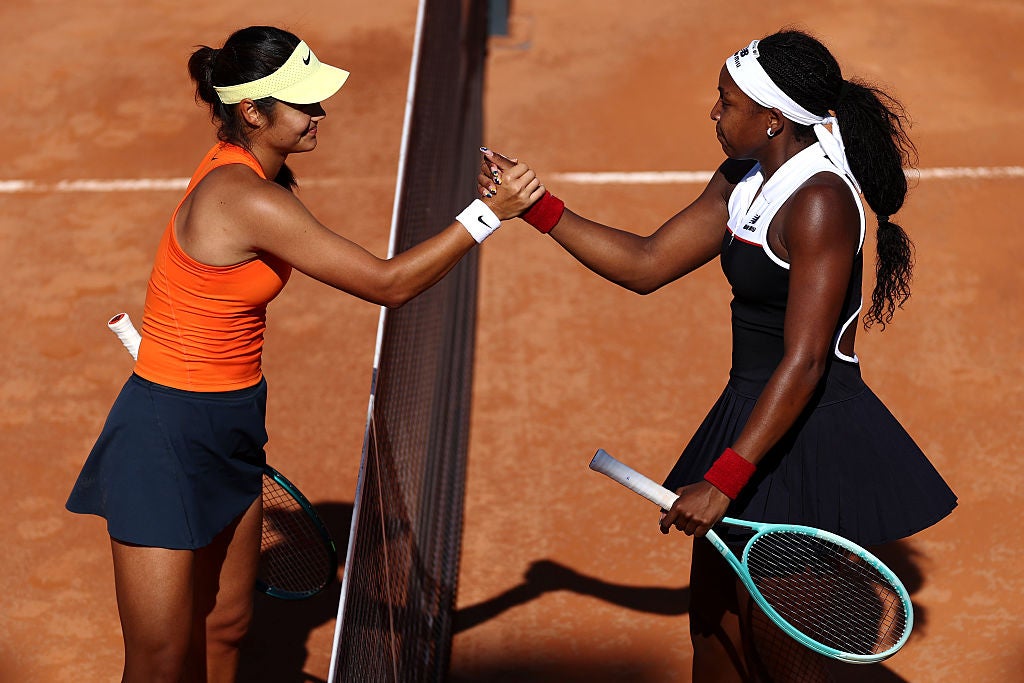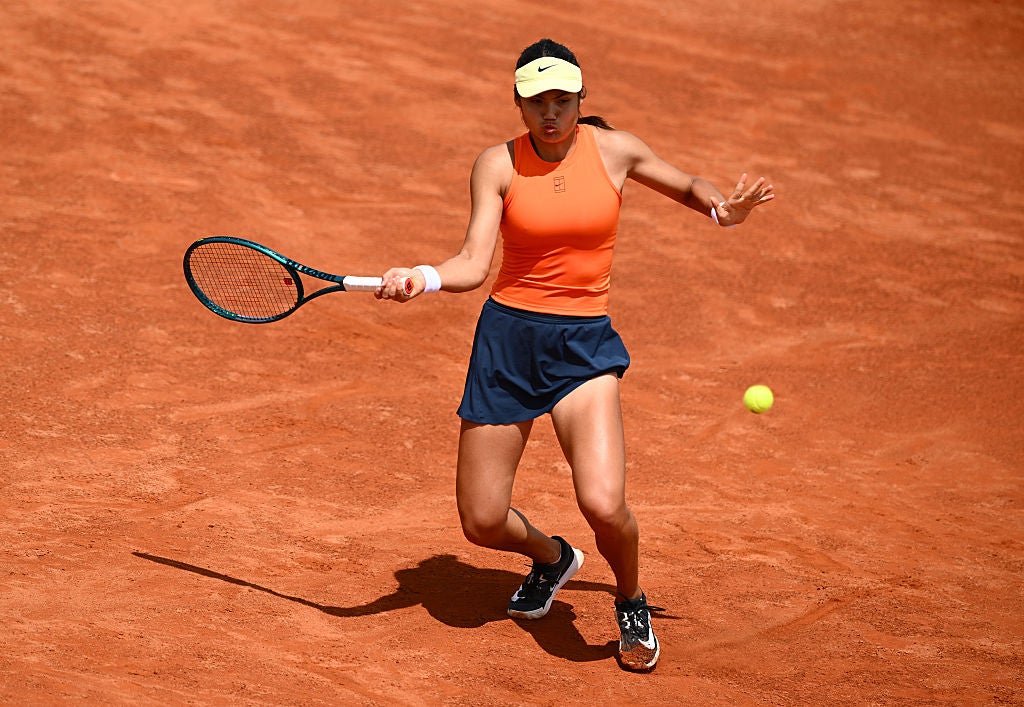The promising signs Emma Raducanu is bridging the gap on clay ahead of French Open
The British No. 2 has had a back-to-front career so far but is laying the foundations for a push back to the top

Clay has never felt like a natural happy hunting ground for British players. The grass-court season on home turf, with its attendant pressures and hype, and the hard-court season that makes up the majority of each year are more familiar underfoot.
That was certainly true of Emma Raducanu, who admitted in Madrid that she did not feel comfortable on the red dirt and occasionally cut a frustrated figure as she failed to get to grips with it.
But on the eve of Roland-Garros, the climax of the clay season, she can reflect on a promising couple of months. She is unlikely to make a deep run at the French Open: the gulf between her and the top clay-courters like Coco Gauff was made evident in their one-sided match in Rome last week. But success for Raducanu – contrary to what Twitter’s armchair experts may think – is not necessarily about that.
This year has been about stringing together runs and rediscovering her natural gamestyle after some time in the wilderness. She herself called it a “fresh start” when she arrived in Rome and said her next few tournaments were about trying to “work on doing things differently to try and bridge the gap between where I am now and where I want to be”.
Her improved athleticism and physical strength has been apparent: this time last year she was retiring from her first round appearance in the Italian capital, and she had only previously done one full clay season. Wrist and ankle surgeries kept her out of Roland Garros in 2023 and she missed the major last year to prioritise preparing for the grass-court swing.
Fast-track to now and she looks a more complete athlete, and more able to sustain momentum over the long drag of the tennis tour. With that has come a rediscovered faith in her game and an increased grittiness and ability to grind out wins. This year’s Rome tournament was the first time she had won three straight matches on the surface.
She backed that up with an impressive scalp in the WTA 500 tournament in Strasbourg, where she accepted a wildcard, beating world No. 17 Daria Kasatkina in straight sets. Her Strasbourg tournament came to an end with a hard-fought defeat to another former top-10 player and dogged competitor in Danielle Collins.
Her mental strength has been apparent too, withstanding seven straight breaks of serve in the second set against Kasatkina, and regrouping from failing to serve out the match in the second set against Maya Joint in her first-round match in Rome, before ultimately winning in three.
Her planned second-round opponent in Rome, 21st Ekaterina Alexandrova, withdrew in the hours before the match and Raducanu had to adjust from preparing to face a hard-hitting ball-striker to the loopier, topspin-heavy style of lefty Jil Teichmann.
Get 3 months free with ExpressVPN
Servers in 105 Countries
Superior Speeds
Works on all your devices
ADVERTISEMENT. If you sign up to this service we will earn commission. This revenue helps to fund journalism across The Independent.
Get 3 months free with ExpressVPN
Servers in 105 Countries
Superior Speeds
Works on all your devices
ADVERTISEMENT. If you sign up to this service we will earn commission. This revenue helps to fund journalism across The Independent.

She followed up a comprehensive win over the Swiss with a three-set epic over the tricky former top-10 player Veronika Kudermetova, before she was outclassed by Gauff, who went on to make the final.
Both on and off the court Raducanu has cut a more relaxed figure this year, with the new regime of Jane O’Donoghue and Mark Petchey – close allies who have known her since before her US Open triumph – clearly working. Raducanu’s approach has always been slightly unorthodox, from the rapid hiring and firing of different coaches, to the choice to prioritise training blocks and accepting wildcards to big tournaments over grinding on the lower-level tennis circuit and gaining match sharpness.
But her choice to overlook a permanent coach in favour of this more low-key approach has paid off; she has spoken at length about playing in an “authentic” way and rediscovering her creativity.
“I think I got very boxed in to a certain way of playing, which was aggressive. I dominate, I’m an aggressive baseliner, but I think I have more tools at my disposal. So in practice these days, I’ve just been messing around with the ball and seeing what I can do, and how creative I can be,” she said in Rome.

All this comes in a spell when the Brits seem to be finally establishing a foothold on the clay. Raducanu’s contemporary Jack Draper has to be one of the favourites for a deep run at Roland Garros, having made the final in Madrid and cemented his status in the world’s top five. Katie Boulter won a maiden title on clay at the WTA 125 Trophée Clarins last week to complete the career set on all surfaces, and fight back in the intriguing battle developing between her and Raducanu for the British No. 1 spot.
There remain several major areas the 22-year-old can work on to narrow the gap to the top. Windy and heavy conditions trouble her and she is still figuring out how to move and slide on clay, a skill that comes with practice and time.
But her clay-court season so far has marked a significant step up and proven that her game – phenomenal when it’s firing – can transfer well onto the red dirt, making her a threat on all surfaces.
For a player whose career has in many ways gone back to front, winning a major title before establishing herself as a consistent force on the tour, the signs are that she is now trending in the right direction.



Join our commenting forum
Join thought-provoking conversations, follow other Independent readers and see their replies
Comments